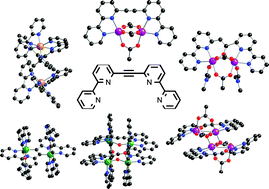Structural diversity in manganese, iron and cobalt complexes of the ditopic 1,2-bis(2,2′-bipyridyl-6-yl)ethyne ligand and observation of epoxidation and catalase activity of manganese compounds†
Abstract
A ditopic

* Corresponding authors
a
Department of Organic Chemistry, Weizmann Institute of Science, Rehovot, Israel
E-mail:
Ronny.Neumann@weizmann.ac.il
Fax: +972-(0)8-9344142
Tel: +972-(0)8-9343354
b Chemical Research Support Unit, Weizmann Institute of Science, Rehovot, Israel
A ditopic

 Please wait while we load your content...
Something went wrong. Try again?
Please wait while we load your content...
Something went wrong. Try again?
V. Madhu, B. Ekambaram, L. J. W. Shimon, Y. Diskin, G. Leitus and R. Neumann, Dalton Trans., 2010, 39, 7266 DOI: 10.1039/B925129D
To request permission to reproduce material from this article, please go to the Copyright Clearance Center request page.
If you are an author contributing to an RSC publication, you do not need to request permission provided correct acknowledgement is given.
If you are the author of this article, you do not need to request permission to reproduce figures and diagrams provided correct acknowledgement is given. If you want to reproduce the whole article in a third-party publication (excluding your thesis/dissertation for which permission is not required) please go to the Copyright Clearance Center request page.
Read more about how to correctly acknowledge RSC content.
 Fetching data from CrossRef.
Fetching data from CrossRef.
This may take some time to load.
Loading related content
